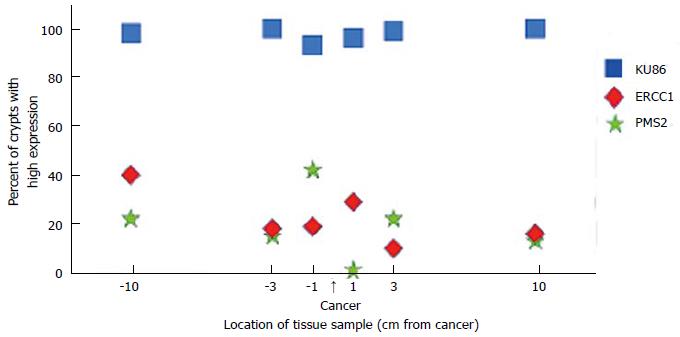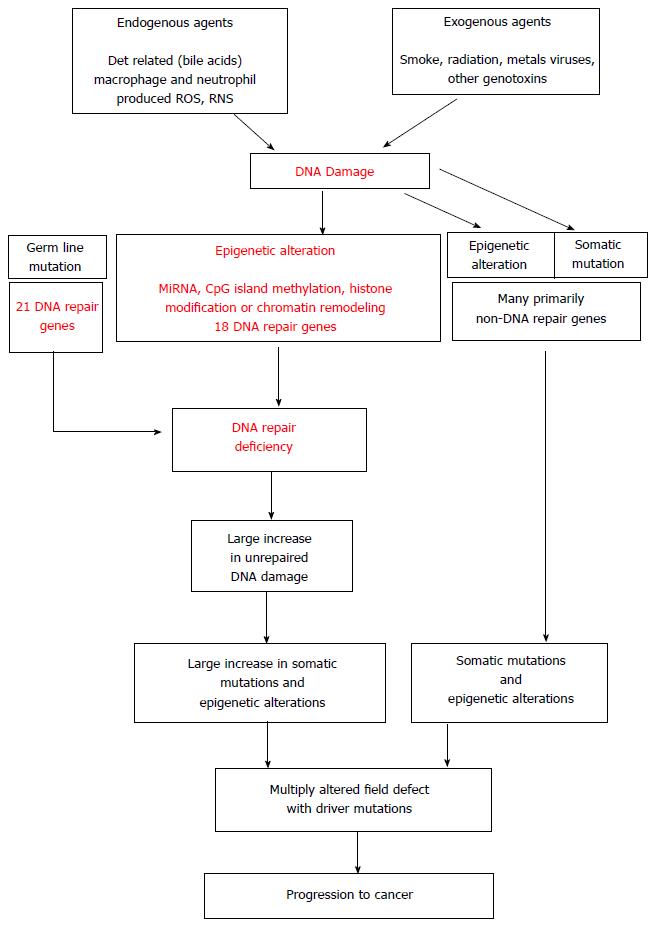Copyright
©The Author(s) 2015.
World J Gastrointest Oncol. May 15, 2015; 7(5): 30-46
Published online May 15, 2015. doi: 10.4251/wjgo.v7.i5.30
Published online May 15, 2015. doi: 10.4251/wjgo.v7.i5.30
Figure 1 Cut open gross specimen of proximal human colon showing multiple tumors[59].
Figure 2 Expression of three DNA repair proteins, KU86, ERCC1 and PMS2, at locations sampled along the 20 cm length of a colon resection that had a cancer at the indicated location[67].
Figure 3 DNA damaging agents, the lesions they produce and the repair pathways that deal with the DNA damages, including acronyms for many of the genes in each of the pathways.
Acronyms in red represent genes indicated in the text that have altered (usually reduced) expression due to an epigenetic alteration in one or more types of gastrointestinal cancer[128].
Figure 4 The central role of DNA damage and epigenetic alteration in DNA repair genes in gastrointestinal carcinogenesis[129].
- Citation: Bernstein C, Bernstein H. Epigenetic reduction of DNA repair in progression to gastrointestinal cancer. World J Gastrointest Oncol 2015; 7(5): 30-46
- URL: https://www.wjgnet.com/1948-5204/full/v7/i5/30.htm
- DOI: https://dx.doi.org/10.4251/wjgo.v7.i5.30












